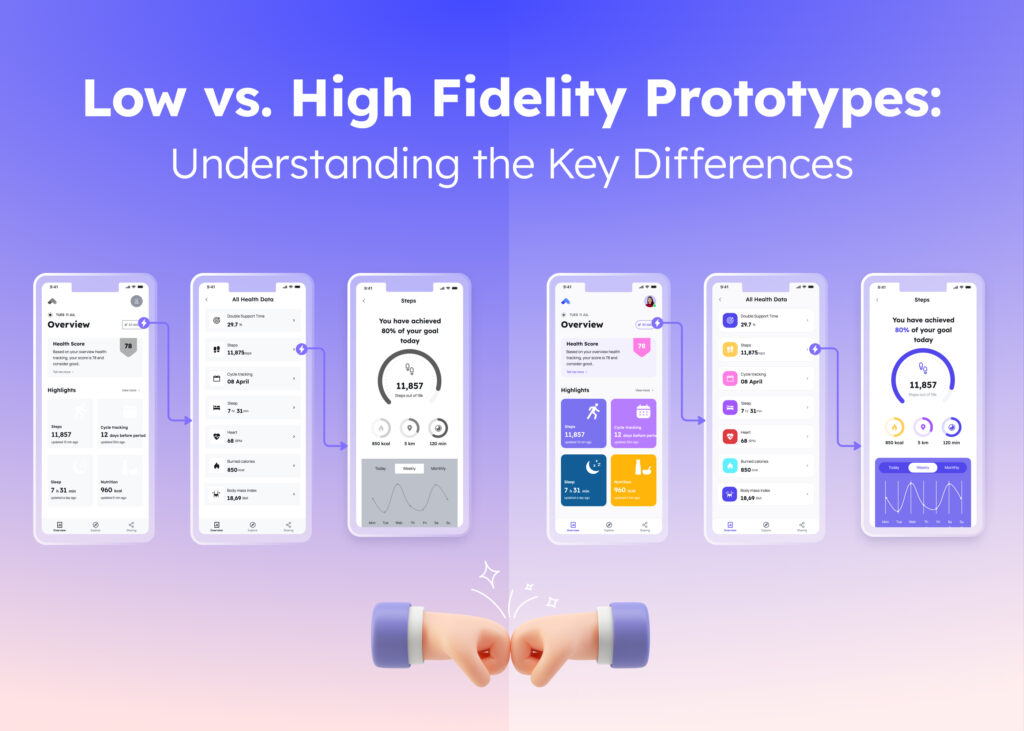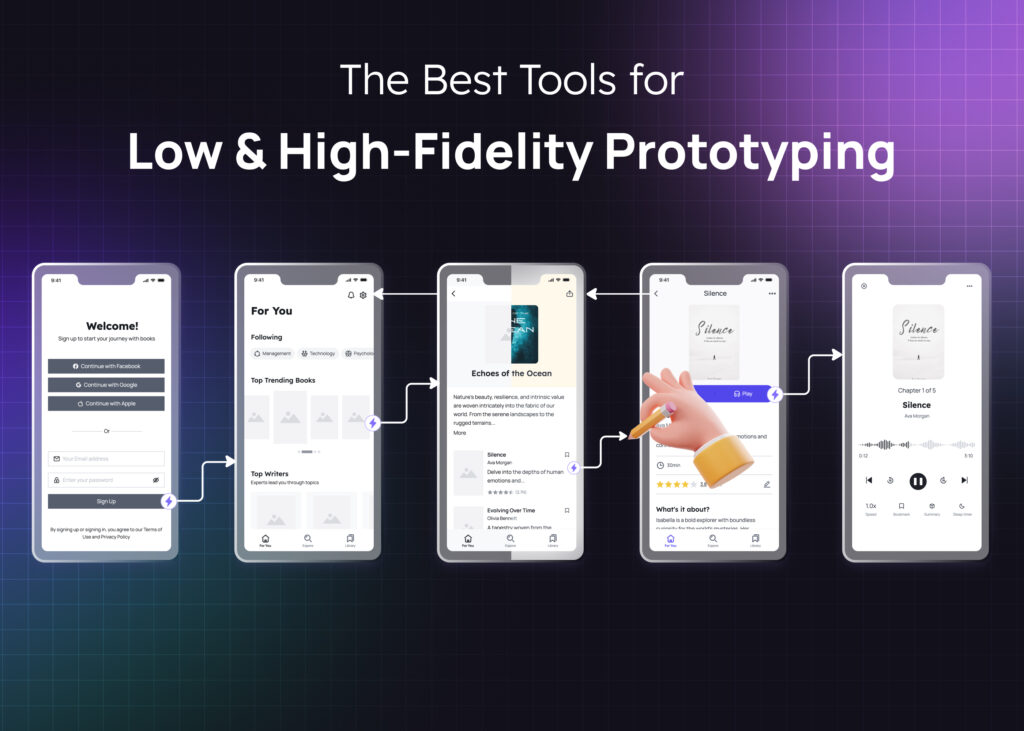Wireframes play an essential part in bringing product ideas to life. They serve as the blueprint for websites or applications’ visual and functional aspects. But what exactly are wireframes? And why are they so important?
In this comprehensive guide, we’ll take a deep dive into wireframe definition, exploring its purpose, types, and recommended tools.
What wireframes are, and why they are important
Wireframes are two-dimensional visual representations of a website or application’s layout and structure. They display the arrangement of elements such as buttons, images, text, and navigation menus. Utilizing Visily’s wireframing solutions can streamline the creation of these visual blueprints, offering intuitive tools tailored for both beginners and seasoned designers. Wireframes play a crucial role in digital design by helping designers and stakeholders visualize a product’s foundational framework and functionality before delving into detailed visual design
Wireframes serve several key purposes in the design process:
- Facilitating communication: Wireframes are a visual language that helps designers, developers, and stakeholders understand and discuss the product’s structure and functionality more effectively.
- Improving usability: By creating a wireframe, designers can identify and address potential usability issues early in the design process, ensuring a more user-friendly final product.
- Saving time and resources: Wireframes allow designers to iterate quickly and make changes to the product’s layout and structure before investing significant time and effort into high-fidelity mockups or prototypes.
Is wireframe a part of UX or UI design?
Wireframing is essential to both UX (User Experience) and UI (User Interface) design processes. With wireframes, UX designers can focus on creating a seamless user experience by optimizing the flow and navigation of a product, while UI designers concentrate on the product’s visual aspects, like typography, colors, and imagery.
Wireframes help bridge the gap between UX and UI design by providing a foundation for both disciplines to work together, ensuring a cohesive and harmonious final product.
What is the wireframing process?
Wireframing is a collaborative and iterative process that helps designers create practical, user-friendly designs that meet the needs of stakeholders and users. There are several steps involved when creating a wireframe.
First, designers must work with stakeholders to gather product design requirements to identify the goals, target audience, desired features, and other relevant information.
Once the requirements have been established, designers create a sitemap that outlines the product’s structure, including the hierarchy of pages and how they connect to one another. This step helps ensure that the design is well-organized and that users can easily navigate the product. From there, designers sketch rough ideas for the layout and arrangement of elements on each page. These initial wireframes are often very basic and are used to explore various configuration ideas and possibilities.
As the wireframes begin to take shape, designers will seek feedback from stakeholders to ensure that the design meets their needs and expectations. This feedback is used to refine the wireframes and make any necessary adjustments.
Finally, when the wireframes are ready, they are shared with stakeholders or sometimes potential users for feedback. This allows product managers and designers to make any necessary adjustments before moving on to higher-fidelity designs or prototypes. This step is critical because it ensures the design is user-friendly and meets the target audience’s needs.
Types of wireframes that all UI/UX designers and product managers must know
There are three types of wireframes, categorized based on the level of detail they provide. By knowing which kind of wireframe to use, you can better communicate your ideas to others and ensure everyone is on the same page.
Low-Fidelity Wireframes
Low-fidelity wireframes are the basic, rough sketches that give out the general look of the product’s layout and structure. These wireframes typically use simple shapes, lines, and placeholder text to represent various elements on the page. You can create them with any tools you want, from basic paper and pen to wireframe tools.
Mid-Fidelity Wireframes
Mid-fidelity wireframes are more detailed representations of a product’s layout, including accurate dimensions and spacing between elements. These wireframes may include labels, buttons, and other UI components, but they still don’t have any specific colors, typography, or images. Mid-fidelity wireframes are created using wireframe tools.
High-Fidelity Wireframes
High-fidelity wireframes provide a pixel-perfect representation of the product’s layout and structure, incorporating real content, images, and precise visual design details. These wireframes are typically used in the later stages of the design process and may be created using advanced UI design tools like Visily or Adobe XD.
Elements in a Wireframe
While the specific elements included in a wireframe will vary depending on the product and its requirements, some common elements found in wireframes include:
- Headers and footers
- Navigation menus
- Buttons and calls-to-action (CTAs)
- Images and placeholders
- Text and headings
- Forms and input fields
What is the difference between website wireframes vs. mobile wireframes
Designing wireframes for websites and mobile applications requires different considerations. Some key differences between the website and mobile wireframes include:
Size
Due to the smaller screen size of mobile devices, designers must carefully consider the layout and arrangement of elements in mobile wireframes. While website wireframes may feature multi-column layouts, mobile wireframes typically use single or double-column layouts to accommodate the limited screen space.
Behavior
The way users interact with websites and mobile applications also differs, and this affects how wireframes are designed. For example, while website users often rely on mouse clicks and hover effects, mobile users primarily interact through touch gestures, such as taps and swipes.
Interaction
Mobile applications often include unique features, such as offline modes or device-specific functionalities (e.g., geolocation or push notifications), which need to be considered when creating mobile app wireframes.
Best UI design tools for wireframing
There are numerous tools available on the market that you can choose to create your wireframe, it can be as simple as pen and paper to wireframe tools. Some popular wireframing tools include:
- Visily: Visily provides the best wireframe tools for creating professional, interactive wireframes and prototypes quickly and easily.
- Sketch: A powerful vector-based design tool that offers a wide range of features for creating wireframes, mockups, and more.
- Balsamiq: A user-friendly digital tool that makes creating low-fidelity wireframes with a hand-drawn look easy.
- Adobe XD: A comprehensive design and prototyping tool from Adobe that supports wireframing, UI design, and interactive prototyping.
Conclusion
Wireframes are essential in the UX/UI design process, helping designers and stakeholders understand the product’s structure, layout, and functionality. By investing time and effort into creating wireframes early in the design process, you can ensure that your final product is user-focused, visually appealing, and efficient in achieving its goals.
Visily is an AI-powered wireframe tool that allows users to create wireframes easily. From Sketch-to-Design, and Screenshot-to-Design to prebuilt and ready-to-use wireframe templates and components, users can effortlessly create any wireframe they want, no matter if they’re non-designers or already experienced ones.
Give Visily a try now!













